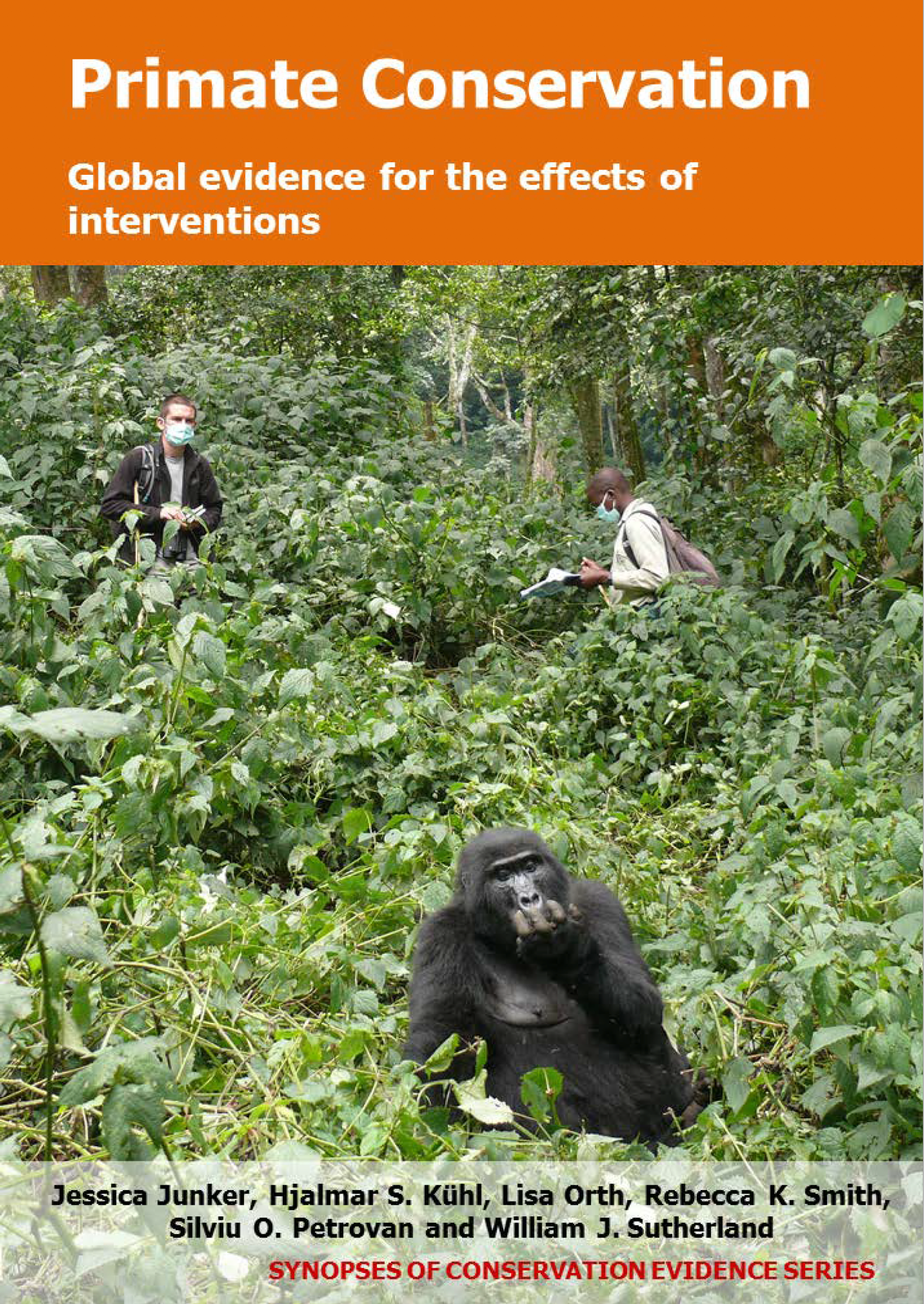Regularly play TV & radio announcements to raise primate conservation awareness
-
Overall effectiveness category Unknown effectiveness (limited evidence)
-
Number of studies: 1
View assessment score
Hide assessment score
How is the evidence assessed?
-
Effectiveness
50% -
Certainty
5% -
Harms
0%
Study locations
Supporting evidence from individual studies
A before-and-after study in 1994-1999 in tropical forest in Conkouati-Douli National Park, Republic of Congo found that the majority of reintroduced central chimpanzees Pan troglodytes troglodytes whose release was broadcasted using various media instruments alongside 16 other interventions, survived over five years. Out of 20 reintroduced chimpanzees, 14 (70%) survived over five years. No statistical tests were carried out to determine whether the decrease was significant. Their release was broadcasted on TV and several illustrated newspaper articles, aiming at raising awareness towards chimpanzee conservation. Individuals were radio-collared and followed at distances of 5-100 m. Rehabilitated orphaned chimpanzees underwent vaccination, parasite treatment and veterinary screens before translocation in four subgroups to habitat where resident chimpanzees occurred. Staff members were permanently present during to monitor primate health, provide additional food if necessary and examine any dead animals. The area status was upgraded from reserve to national park in 1999. Local people were relocated from the release site to a nearby village. Some chimpanzees were treated when sick or injured. Local people were provided monetary and non-monetary benefits in exchange for their conservation support. The study does not distinguish between the effects of the different interventions mentioned above.
Study and other actions tested
Where has this evidence come from?
List of journals searched by synopsis
All the journals searched for all synopses
This Action forms part of the Action Synopsis:
Primate Conservation
Primate Conservation - Published 2017
Primate Synopsis





)_2023.JPG)














